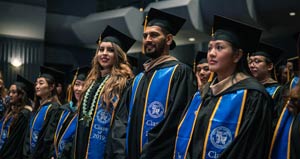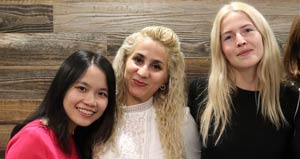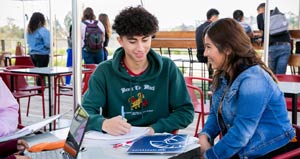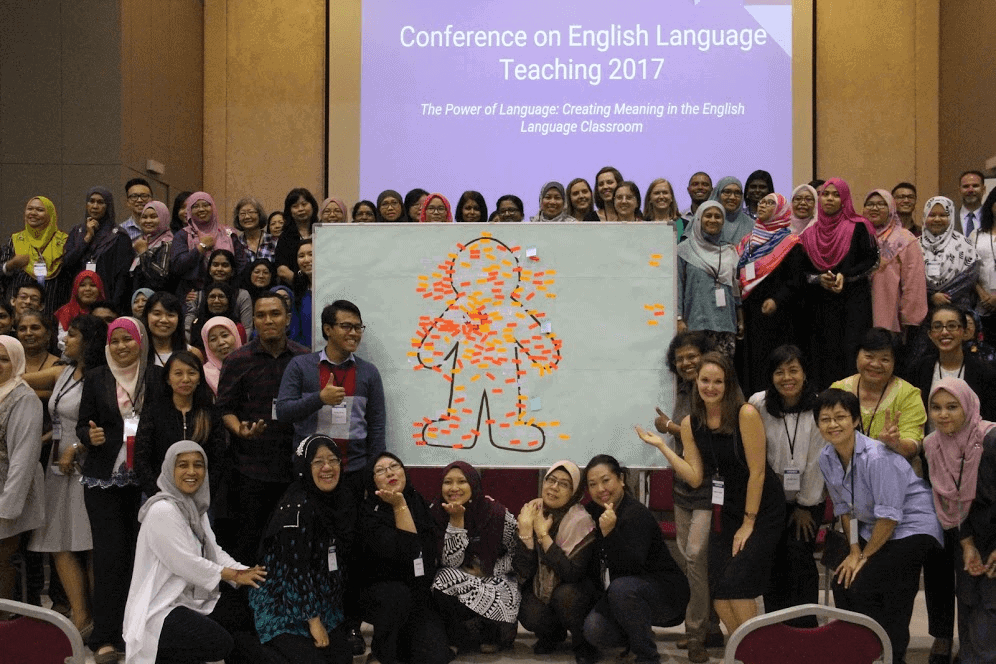
A Conference Designed by Teachers for Teachers
By Professor Christa Bixby
I vividly remember sitting in a massive theatre hall with over 3,000 educators attending yet another conference, and as I was listening to a seemingly never ending welcome speech (the third of the morning), I took a second to look around. Half of the educators around me were asleep, yes I do actually mean eyes-closed, snoring, slumped-over sleeping, and the other half were scrolling through their phones grasping for something remotely interesting. It was fairly disheartening, and yet, I completely understood where they were coming from. Conferences, not all, but many, seemed to be framed without the teacher in mind. A colleague and I were left wondering, who was benefiting from this? We preach student-centered classrooms that focus on the interests and future goals of students…wouldn’t the same thing apply to the conference context? Shouldn’t it be teacher-centered and focused on that which would actually aid teachers in the classroom? Shouldn’t they at least TRY to engage us? With this in mind, my colleague and I set a plan in action…to develop a conference designed by teachers for teachers. It is my hope that this will at least provide you with some ideas, maybe even some you would want to implement yourself!
The Heart of What We Wanted to Accomplish
Equal Access. The cost of conferences, due to being held at expensive hotels and spanning over a multitude of days, seemed to inhibit the range of participants who were able to attend. We desired to create an inclusive conference where price was not a factor. We were able to accomplish this by offering a one-day conference for those who were not able to be away from home for a long period of time, held it within our University, and made it free for all participants.
Practical Content. Another focal point of our conference was to select proposals that integrated theory and practical applications for primary, secondary and university teaching contexts. Every aspect of the conference, from start to finish was collaborative and interactive. We essentially created a workshop-style conference that doubled as a way to show teachers (especially in our context) that doing activities with large groups is possible. It just takes a little bit of creativity.
The Day of
One of our goals was to ignite an energy right at the start of the conference. This meant – no long speeches, no recited history of the university, and no musical performances. Each of our speakers were given 2 minutes to welcome the guests in the most interesting and relatable way they knew how (these speakers were very intentionally chosen).
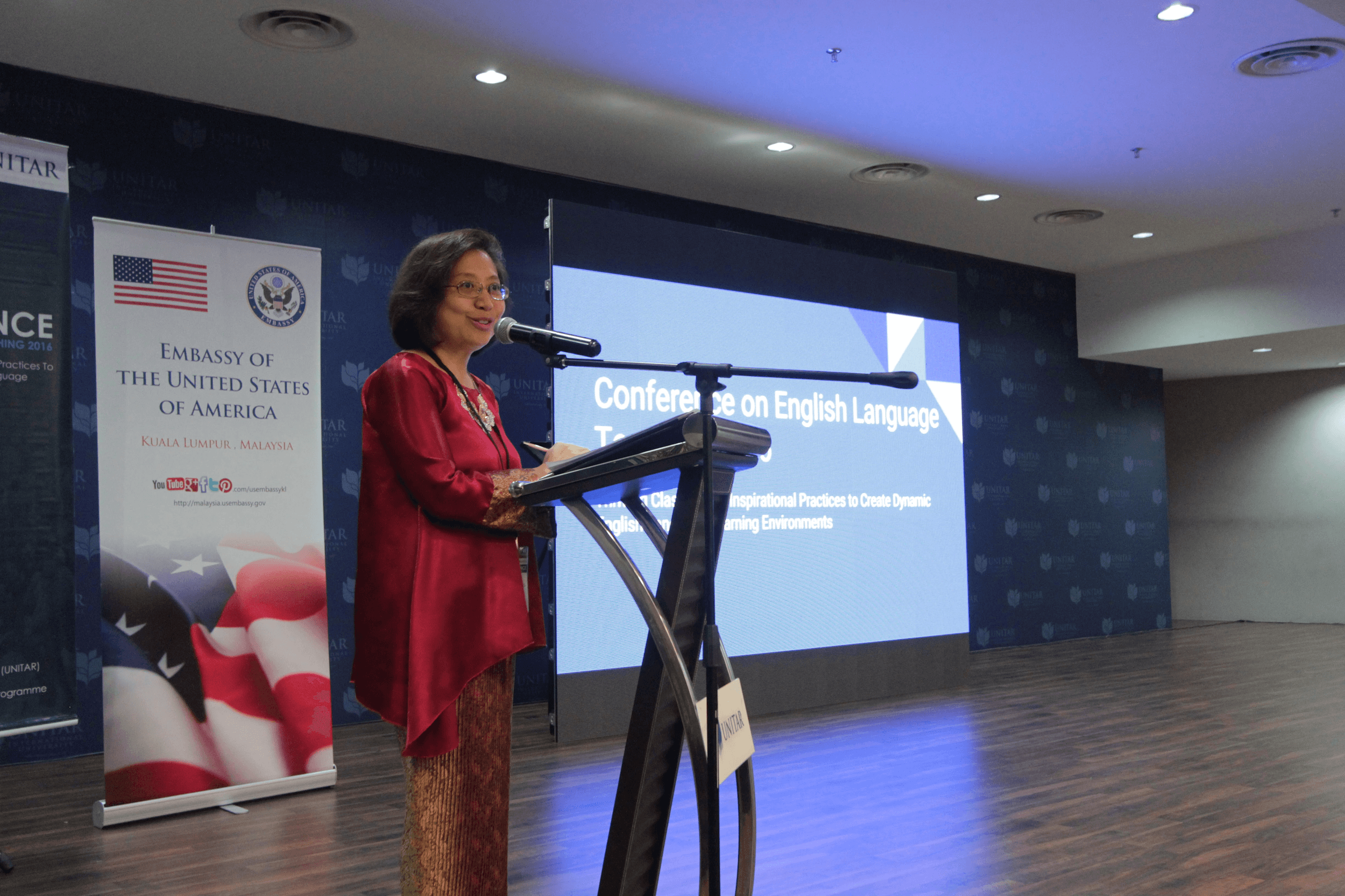
After these speeches, we began the day with a find someone who activity (for those who are curious, this is the one we used: click here). All participants in the crowd got up, moved around, networked, and made connections that lasted throughout the day and inspired community as people had already established a point of connection with others in the room.
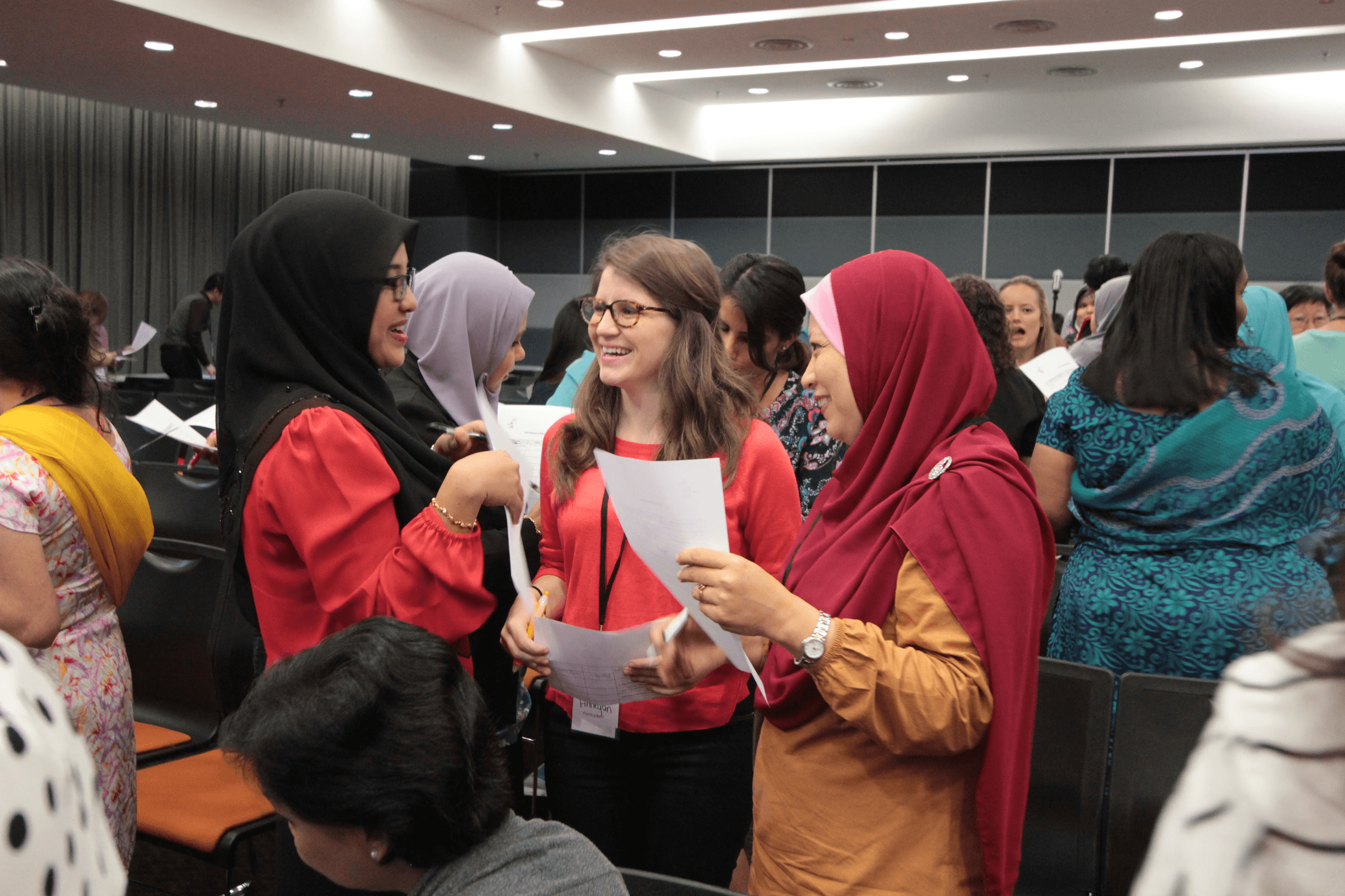
Following the activity, my colleague presented on the theoretical rationale for collaborative activities in the classroom. I followed this up by leading the teachers in a collaborative activity which showed how to integrate the theory in a practical way. The best part was, none of the teachers could tell me they would never be able to do it with their class sizes!
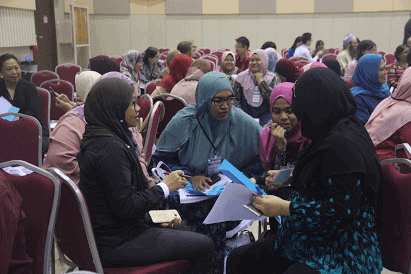
After the opening session, the teachers left in a buzz. They were excited, laughing, and most importantly engaged. I truly believe they felt as if their time was being respected and honored. We had numerous sequential sessions that were all workshop-style. At this conference, we did not allow any paper-based presentations. It needed to be interactive. There had to be a practical take-away.
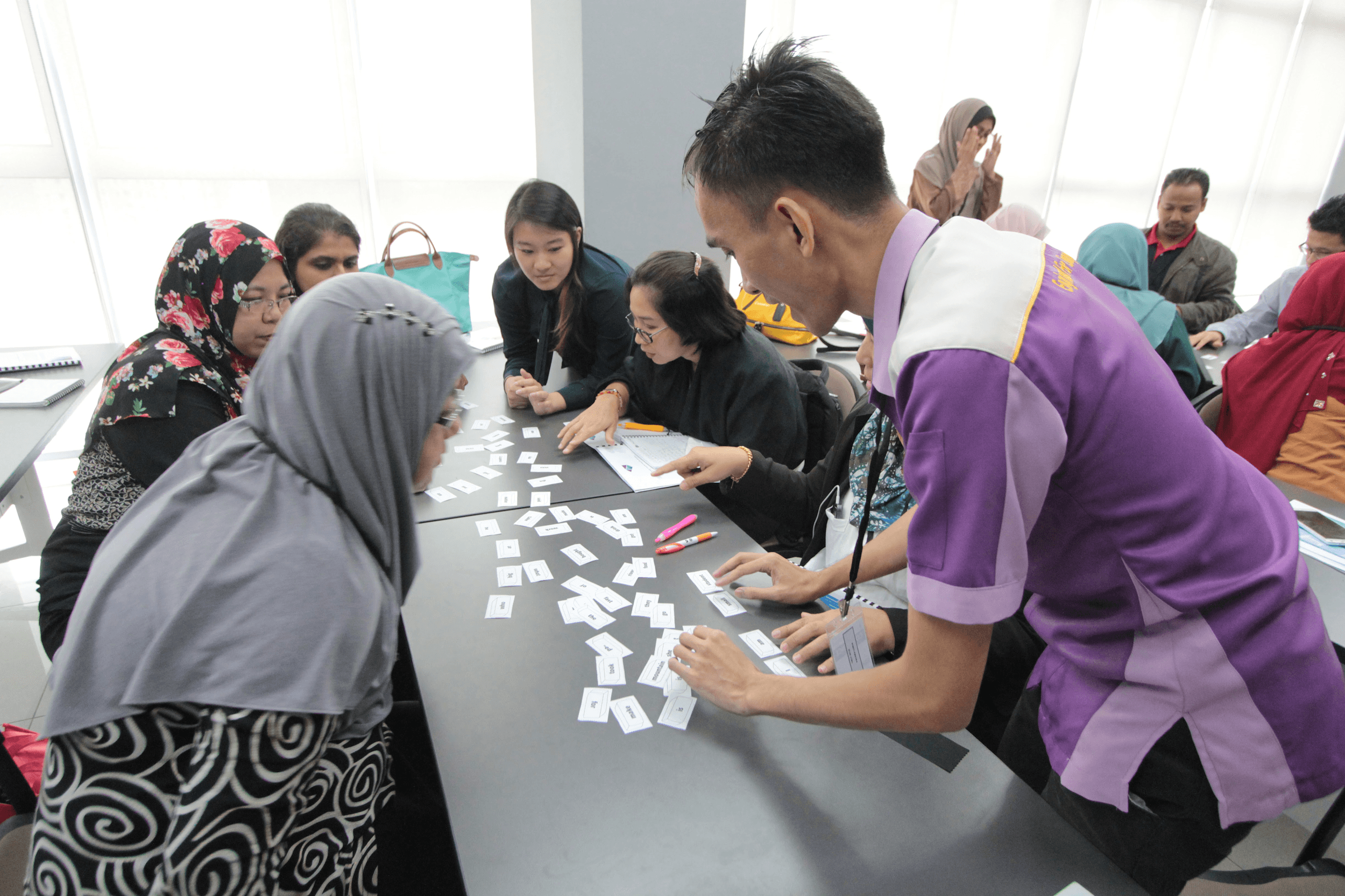
Throughout the day, the teachers were encouraged to add to a reflection board located near the front of the auditorium. Here they could write their favorite collaborative activities. Teachers could walk by and read them and get ideas for their own classes (to see the instructions for this activity, click here). We earnestly believed that everyone had something to contribute, even if they were not holding a workshop.
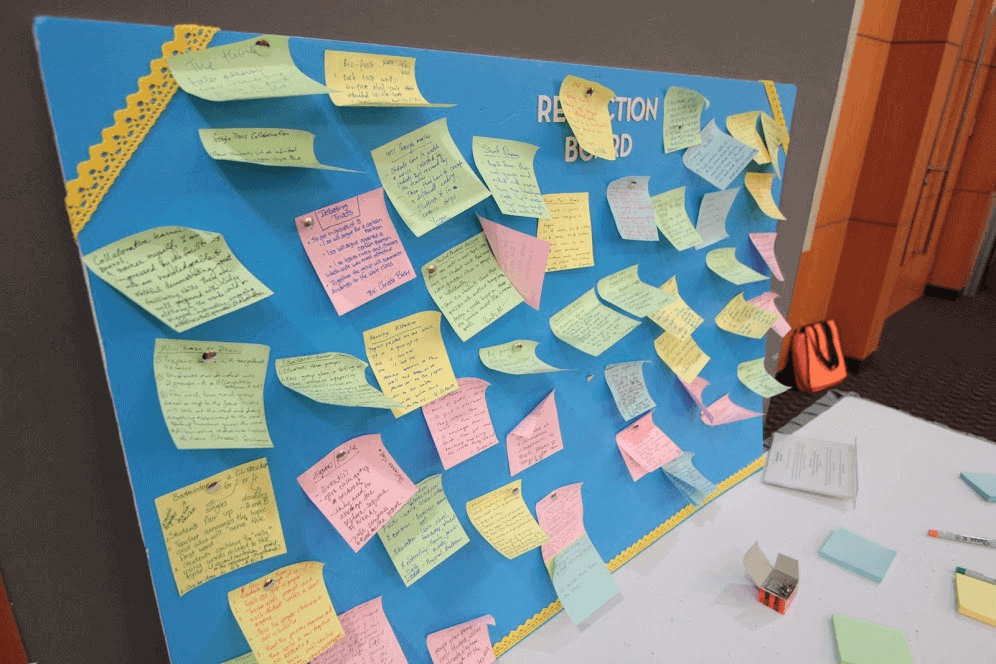
In our closing session, we chose to do a final reflection activity. Generally, we go to a conference and learn an extravagant amount. It is hard to process all of that information or even allow ourselves the space to do it. We wanted our teachers to not only feel inspired but to do something with that, so we believed that this time of reflection would be valuable to them (and as always, also be an example of something they could do with their students). Each teacher was given an outline of a gingerbread man (for our outline, click here). On that gingerbread man, they were asked to write:
On the head – Something new you learned today
On the heart – Something that inspired you
On the feet – What you will do about it
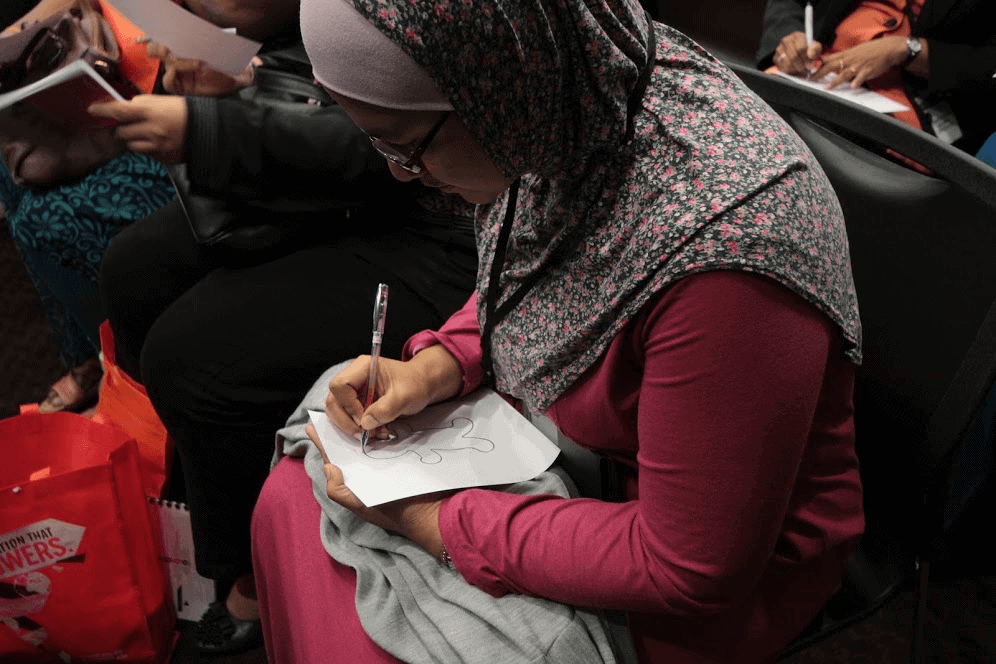
Alternatively, you could also have them write these on stickers and place it on a giant gingerbread man (as we did in our sequential conference)
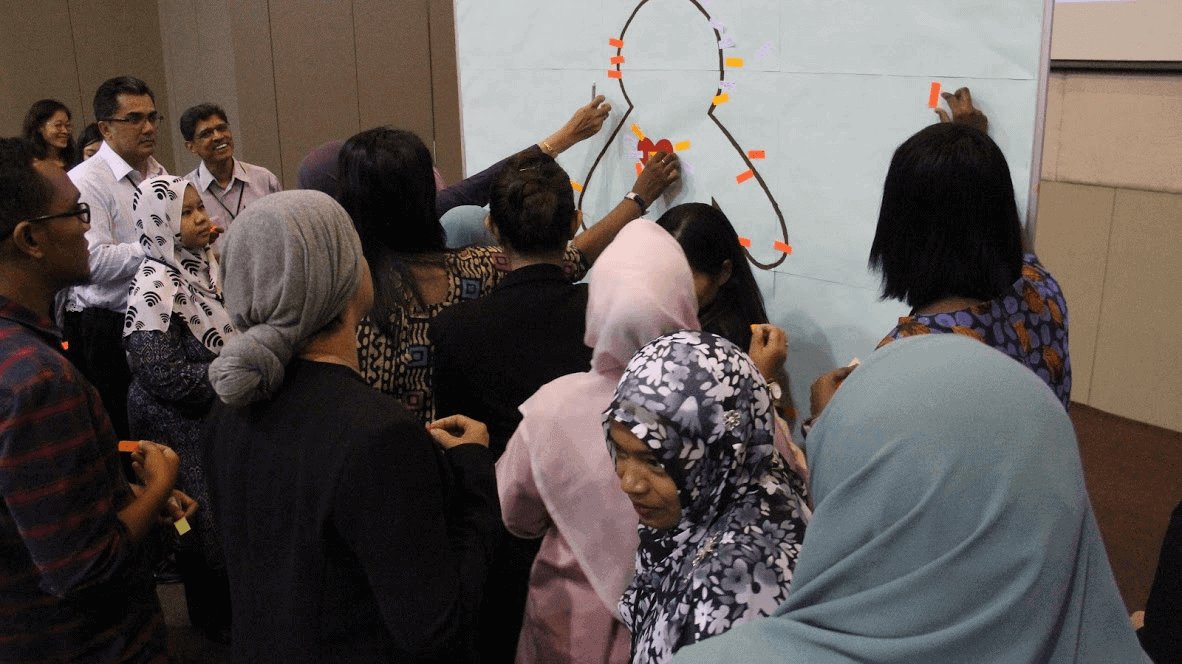
It was in this closing ceremony that something happened that I will never forget. A teacher stood up and shared what she had written on her gingerbread cut out. But, then she said, “Please know, there is no way we would ever be able to show our gratitude you for what you have given us here today. All we can do is promise that we will take what you have taught us, and we will implement it….I promise we will.”
It takes work to organize something like this. It takes patience (and a lot of it). But, the impact that we can have is something that cannot be measured. I think the goal of this entire event was to empower…and I think we did just that, we empowered a group of teachers to be reinspired, to remember their worth, to remember that their work matters, and to come back to the belief that teaching can, and dare I say, even should – be fun!
Tips/Steps for Creating your Own Workshop-Style Conference
1: Cut costs wherever possible
- Ask a school/university where you are based to use their space. Remember that events like this are incredible ways for institutions to market themselves. You should not need to pay to utilize a space, especially if you only hold a day-long conference. Explain the mutual benefit for both parties.
- Reimage the concept of an ‘expert.’ For many conferences, large names in the field are flown in from all over the world (which is incredible….but leave that to the larger scale conferences to worry about). Instead, focusing on providing a collaborative environment for participants instead of worrying about providing a lecture based environment. A great example of this is what is referred to now as unconferences.
2: To find a sponsor or not to find a sponsor?
- If you can find someone to sponsor your event, great! You do need to keep in mind that conferences do come with costs: food, coffee/tea breaks, printing, brochures, etc. Try asking your University for funds, local TESOL organizations, even local business that want to support the future of education.
- We were pretty lucky when we put this conference on as we were English Language Fellows at the time, so the Embassy of Malaysia sponsored our costs. However, we definitely still had a budget. The most expensive portion of this entire conference was, the food. So consider, do you need food? Or can you hold it in a location where participants can be given a lunch break and run out and grab food (if your conference is free, this isn‘t too much to ask of them). A second big expense is printing costs. However, think about ways to be creative. Ask your participants to each download Whatsapp on their phones. They could join a chat group where you could share updates or the schedule. Alternatively you could have designated places where you post the schedule instead of passing out an individual brochure to each participant.
3: Identify a theme
- Put thought into what you want this conference to focus on as this is crucial to the energy of the event. If it will be entirely workshop-based, maybe go with a more interactive type theme.
4: Develop committees
- This will depend on how many people you have willing to help you. Here is a breakdown of ideas of roles that different committees play: click here
5: Call for proposals
- Identify your target group and then send out a call for proposals. Here is an example of the one that we used. This should be sent out several months before. You can send this out twice, the second time maybe 2-3 weeks prior to the deadline.
- Consider who you want to review these proposals (try to find at least 2 other individuals to help you review. Use a rubric to score dependent on your context, but consider elements such as: quality of title, quality of content, relevance to the theme, quality of methodology, relevance of topic in current theory and practice.
6: Create a website/page where participants can register
- This can be done through something as simple as Google forms. Set the deadline for registration keeping in mind that knowing your number is helpful for figuring out food/coffee, etc. Allow yourself ample time for this by ending registration fairly early.
7: Find volunteers
- In all honesty, the volunteers run the show. Find volunteers you trust to be on time, to complete their responsibilities, and that are self-motivated. I used the university’s TESOL students as my set of volunteers (They were already interested in the topic and wanted exposure to the field).
- Roles of volunteers:
- Food and Coffee-breaks (set-up, break-down)
- Registration (sign-in, pass out bags/brochures)
- Directions (scattered around the university to direct to the rooms)
- Room Managers (time keepers, introduce the presenter, answer questions about technology)
8: Plan for the day of
- Dream up how you want the day to progress, what activities you want to use, who you want to be involved, etc. Once you have dreamed and imagined…then create a timetable (see example here)
- Logistical aspects:
- Sign-in sheet (I recommend adding a box regarding consent for the use of the photos taken at the event for future marketing purposes)
- Brochure
- Acceptance/decline letters for presenter proposals (example)
- Certificates (for participants, presenters, and volunteers)
- Badges (example) for participants, presenters, and volunteers
9: Host an incredible event!
The best advice I can give you for the day of event is to just breathe and try to enjoy it. Being stressed throughout the event is futile. You put in all the work needed so trust others to do their jobs and enjoy the fact that you have brought people together to collaborate and grow!
I hope this serves as a helpful basis to the process of putting together a quality conference. If you should have any further questions, I would be happy to discuss or share my personal experience. I can be reached at christabixby@westcliff.edu.


